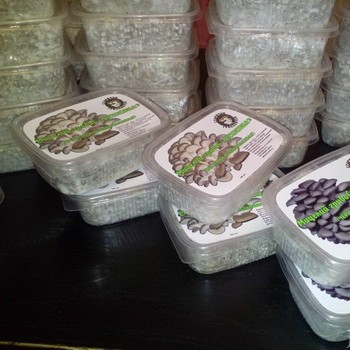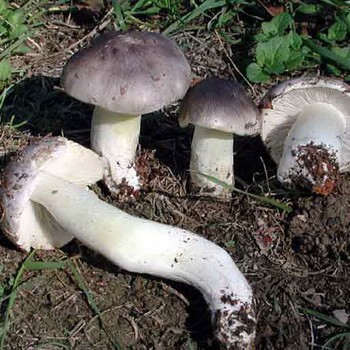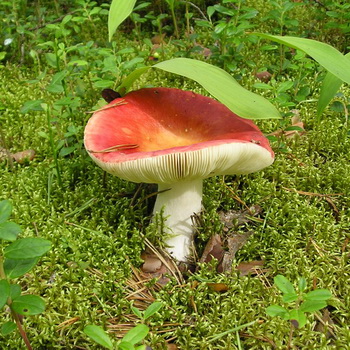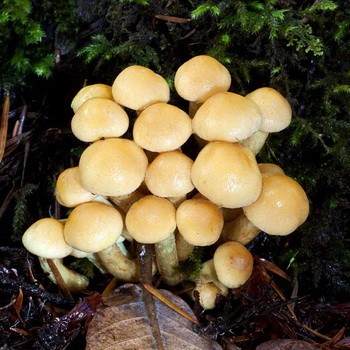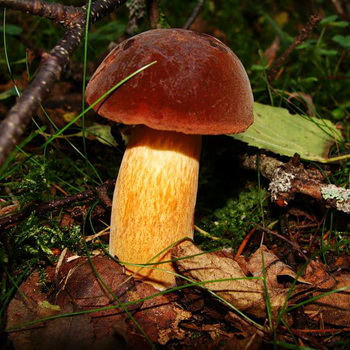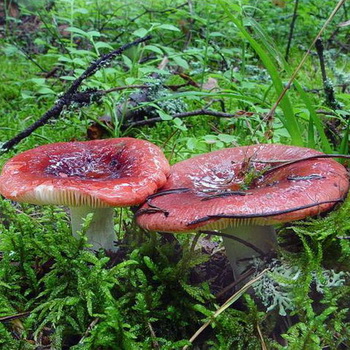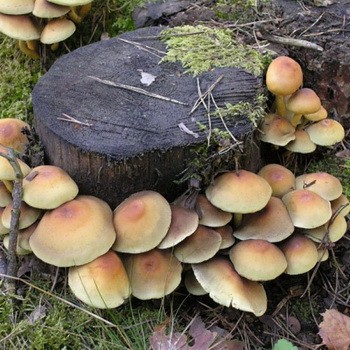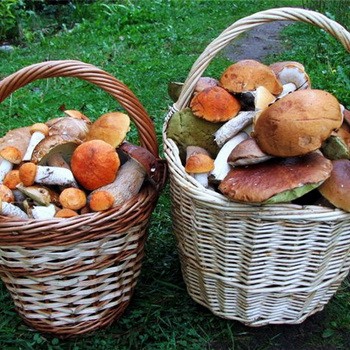Types of mold when growing mushrooms
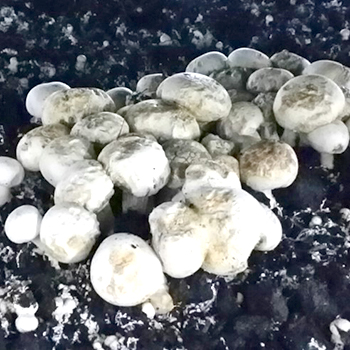
Content
Why does green mold appear on mushrooms

Green moldAs a rule, it affects mushrooms grown in large rooms. The reason why green mold appears on the fungi is different types of skeletons, they are quite widespread in nature and appear in the substrate together with the starting materials. They also, along with other microorganisms, participate in fermentation. This pathogen does not suffer at high temperatures. In this case, the remaining microorganisms die, the adana fungus begins to develop even faster, without encountering any obstacles and competitors. The mycelium of this fungus is thin hyphae that permeate the entire substrate and give it the smell of a cellar and mold. Champignon mycelium is not able to develop in such conditions, since it does not find nutrients. He dies very quickly. And the parasite fungus develops spores. As a result, buds of light green, olive green, black appear on the substrate. The spore-bearing fungus is filled with green spores. In addition, ammonia in the substrate and a lack of fresh air only stimulate the development of this fungus. If the chicken droppings are mixed unevenly in the initial mixture, then this also sometimes causes the appearance of green mold.
How mushrooms infected with green mold look, shown in the photo:
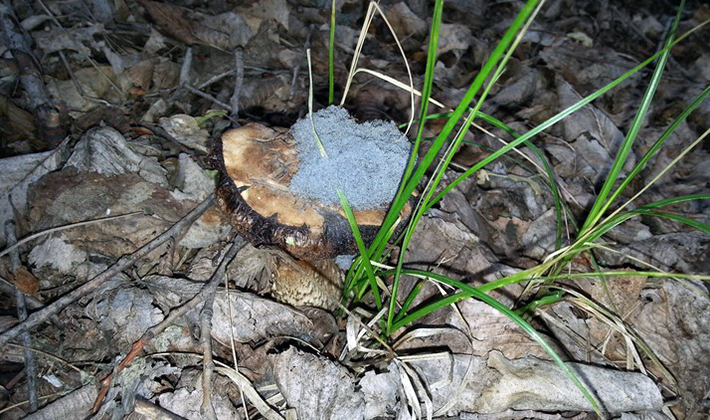
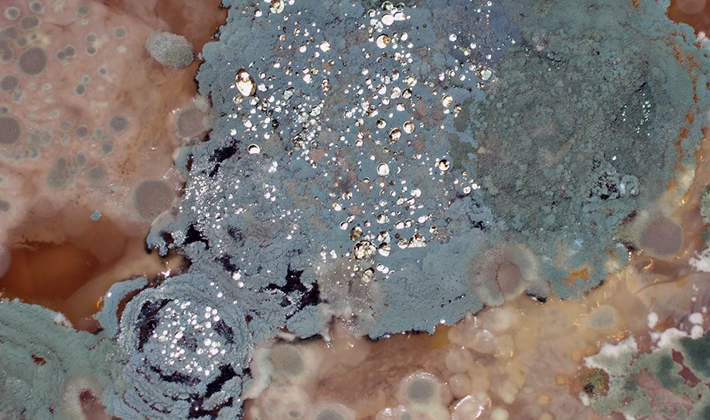
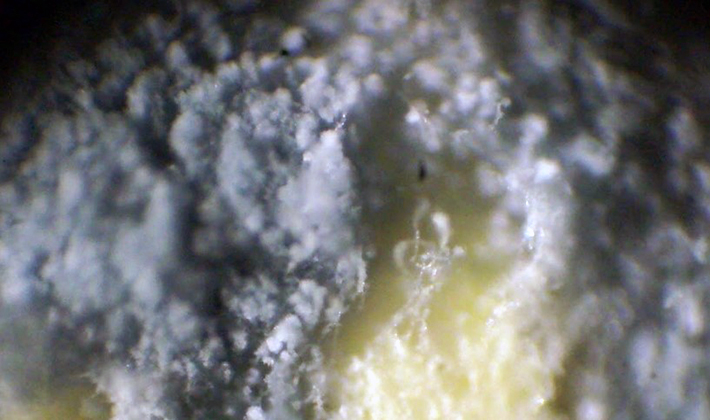
Green mold can only be prevented. Why should the starting material for substrates be taken only in the appropriate dosage and correctly composted. The pasteurization process itself must be constantly monitored, in no case allowing overheating.
It is permissible to shake the substrate affected by the disease again. As a result, you can get a low yield. Before such manipulation, the substrate is usually sprinkled with superphosphate powder.
Brown and yellow mold on oyster mushrooms and champignons
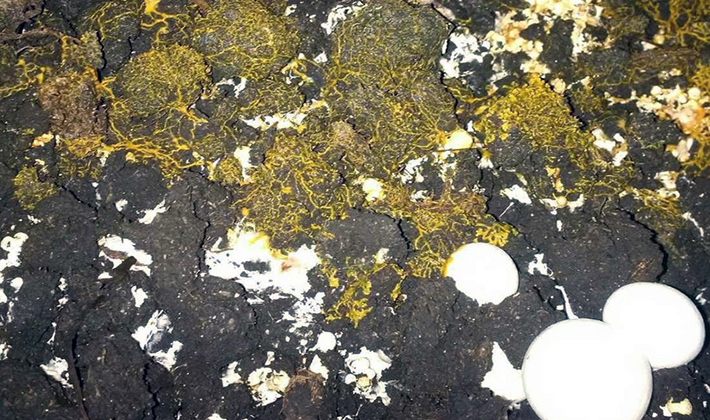
Brown mold often affects oyster mushrooms and champignons. Its causative agent is moldy saprophytic fungus. Mold can appear on the substrate before or after filling the coating material. First, the mold is white and fluffy, and then it becomes brown-gray, in the form of plaque. If you pat it on your hand or pour it, then dust will rise from the spots. When the champignon mycelium sprouts in the integumentary material, the fungus mold disappears.
This disease can only be prevented, its treatment methods do not exist.As a preventive measure, cover material should be treated with foundationazole. In addition, composting on the ground is not worth it.
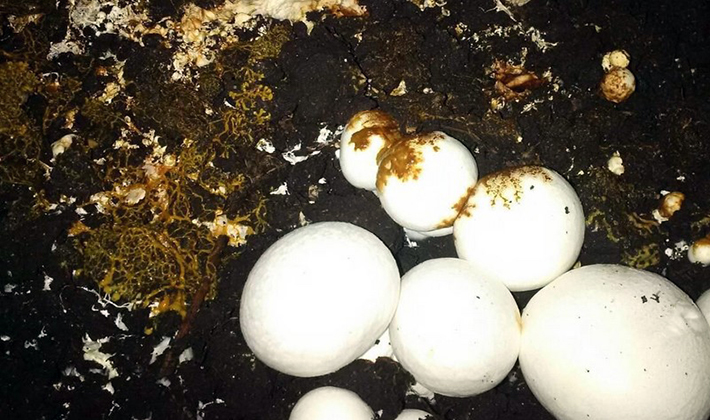
Yellow mold also often affects champignons. It is caused by a parasitic mold fungus Myceliophtora lutea; this pathogen is one of the most dangerous for champignons. Such a mushroom can be found in nature - it parasitizes on the wild mycelium of various mushrooms. And in the substrate it develops only if there is also champignon mycelium. A whitish mycelium appears at the boundary between the coating material and the substrate. After which spores are formed and the affected areas become yellow. The substrate itself begins to smell like copper oxide, or carbide. The spores of the fungus are quite resistant to high temperatures, they do not die during pasteurization and can be transported with soil infected with the substrate through the hands of people and tools.
For preventive purposes, you must strictly comply with sanitary requirements, properly compost. If the substrate is infected, then around the champignon every week everything should be sprayed with a 4% formalin solution. And after each interruption, it is required to spray the shoulders with a 1% solution of copper sulfate. The infected substrate is also treated with a 1% solution of copper sulfate and only then taken to a landfill. This substrate cannot be used as organic fertilizer. After every crop rotation, all production facilities must be steamed for 12 hours at a temperature of 72 ° C.
What to do if confetti mold appears on the mushrooms

Yellow mold confetti Is a different disease than normal yellow mold. It is caused by another type of parasite fungus. A whitish mycelium forms in the substrate in the form of scattered spots. They turn yellow a little later and turn yellow-brown. In the middle, fungal tissue can even form.
Developing simultaneously with champignon mycelium, this parasite begins to gradually prevail over it. Spots can be clearly seen through the bag. They are even easy to verify by pouring the substrate from the bag onto the paper and dividing it into horizontal layers. Mold is usually different from that of champignon mycelium, color - it is always grayish-silver. Developing, the disease depressing effect on the fruiting of champignon. It first slows down, then finally stops.
The greatest development of mold occurs on the 50-60th day after sowing the mycelium. Therefore, the later the fruiting in the champignon comes, the more losses will be.
Spores of this moldy parasite fungus die at a temperature of 60 ° C and above. More often the disease spreads through the substrate, sometimes it can also be found on the ground. The infection can get into the substrate when it is unloaded from the camera. Spores are brought by the wind along with dust from neighboring mushrooms or from the waste substrate. Soil material can also become infected. Disputes are carried along with clothes and shoes, with tools, ticks, mice, mushroom flies, etc.
To prevent infection, it is necessary to comply with sanitary requirements both in the champignon itself and in the territory adjacent to it. Composting must not be carried out on an earthen floor. The substrate must be pasteurized correctly for 12 hours at a temperature of 60 ° C. It is preferable to use bags made of polymer film, which will reduce the risk of spread of infection when laying champignons. In addition, all measures should be rigorously carried out (preparation of a selection substrate, rapid germination of mycelium, mixing it with a pasteurized substrate, etc.), accelerating the growth of mycelium and fruit formation. This will help reduce the risk of crop loss.
If the mushrooms are still covered with mold, then the trimmings of the legs and the coating material adhering to them cannot be scattered. They must be collected in bags of polymer film and put in a specially prepared hole for this. This waste must be watered with copper sulfate solution every day. The pit needs to be covered with earth.The entire room in which champignon is packed must be washed and disinfected every day with a solution of copper sulfate. All ventilation openings must be blocked by nets. Before and after working in the champignon, all work tools should be washed, work clothes should be washed, shoes should be washed and sanitized with copper sulfate solution, hands should be washed with soap.
The main measures to combat mold fungi are preventive. First of all, it is necessary to remove all sources of infection at all stages of mushroom cultivation.
So that mold does not appear on the mushrooms, the entire territory in the champignon is required to be sprayed once a week with a 1% solution of copper sulfate. Before removing it from the champignon, the used substrate must be treated with a solution of copper sulfate. It can be used as organic fertilizer only where there is no champignon. Production facilities should also be steamed with the substrate.
Yellow green mushroom mold
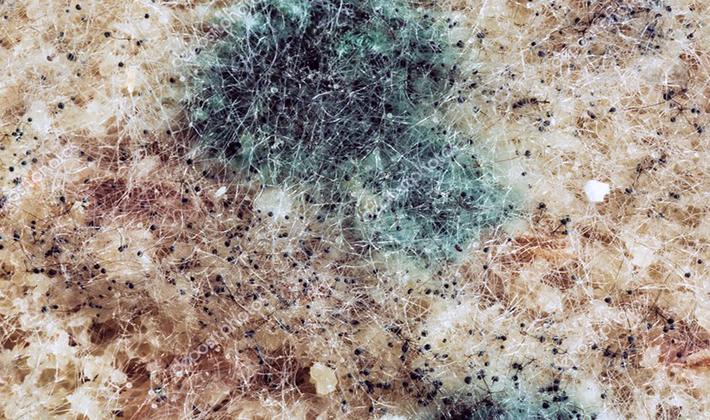
Yellow green mold the substrate in mushrooms is affected quite often. Mushrooms become weak, gray in color; the mycelium is gradually dying. In its place, moldy fungi form with yellow-green spores and whitish mycelium. It has a characteristic mildew smell and seems viscous. This disease is caused by several different molds. They are capable of developing at the same time, and isolating them is rather difficult. This type of mold is common in nature. It enters the substrate together with the starting materials and, along with other microorganisms, participates in composting. Yellow-green mold begins to develop at a temperature of 45 ° C. It completely dies with good pasteurization. If pasteurization is carried out in bad faith, and the substrate itself is of poor quality, then mold quickly affects the mycelium of champignon in the early stages of development. Infection can penetrate into a quality substrate. Sources of infection can be an infected waste substrate, which is scattered near the champignon and compost site, wind and dust, shoes, tools. It’s too late to think about what to do when the mushrooms are already moldy. If the infection is brought in at a relatively late time, when the mycelium has fully formed and fruit formation has begun, then the risk of crop loss is slightly reduced.
To prevent this disease, you must always follow all the rules of hygiene on the compost site. Do not use long-stored bird droppings. Composting should be carried out, adhering to all requirements and placing it in the shoulder area. The substrate must always be heat treated. In addition, it needs to be moistened immediately after extracting the mushroom from it. On windy days, it is undesirable to clean it. The spent substrate must be taken out in bags of plastic film. Wash mushrooms regularly and disinfect with fungicides.
Other types of mold fungi
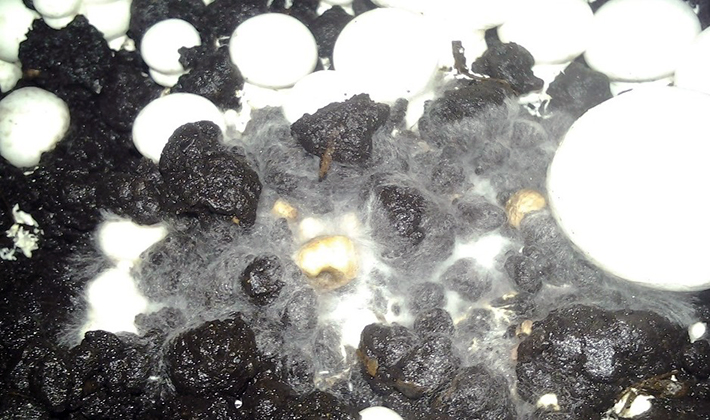
Carmine mold caused by mold fungus Sporendomena purpurescens Bon. It appears during fruiting in the form of white down jackets or a mycelium cover between lumps of integumentary material. The mycelium of this mold develops very quickly and covers the entire layer of coating material. It does not absorb water during irrigation. In champignon, fruiting first decreases, then ceases altogether. Mold mycelium turns yellow, later becomes cherry red and spore formation begins. This mushroom is very fond of nitrogen and develops in a substrate rich in it. If the temperature of the substrate becomes 10–18 ° C, then the growth of mold fungus increases, and the development of cultivated fungus, on the contrary, slows down.
To prevent this disease, a substrate that is supersaturated with nitrogen and waterlogged should be avoided. Very carefully, nitrogen fertilizers must be applied. During the heat treatment of the substrate, there must certainly be an influx of fresh air. Ammonia must be completely freed. The temperature of the substrate must also always be optimal for the cultivated fungus.
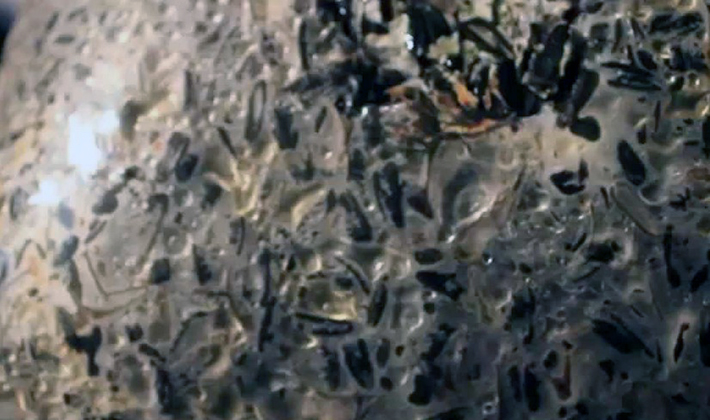
Cobweb and olive mold - The most common diseases of oyster mushroom. They appear on the substrate and inhibit the growth of mycelium and fruit formation. The simplest and most effective way to combat these diseases is salt. It is usually sprinkled with infected areas. Salt does not allow the disease to spread further.
